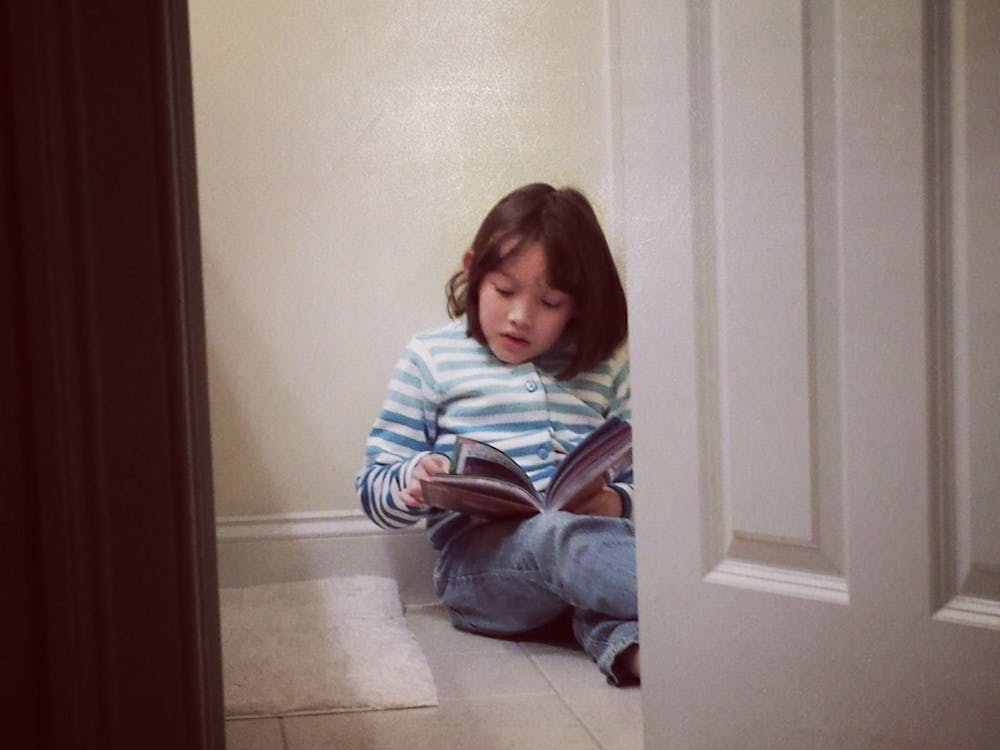The feeling of a book and its pages in a reader’s hands is at once a cherished and inexplicable experience. Whether the tears on the edges of pages and notes between the margins evoke a feeling of nostalgia, or, oppositely, the pristine quality in which it may be kept, symbolize the sacred regard for that piece of literature. The physicality of a book says a lot about the reader. This value placed on the book itself is often cited as the reason for the backlash against the new wave of Kindles and other various e-books, which sacrifice the paper and ink for a more eco-friendly and condensed medium.
Therefore, it came as no surprise that when a new jacket copy for F. Scott Fitzgerald’s The Great Gatsby appeared on shelves last Tuesday, the literary world was a little shaken up. Rather than the classic artwork of a floating face against a blue backdrop, the new cover features the stars of Baz Luhrmann’s upcoming cinematic adaptation of the novel, set for release on May 10th, in a flashy frame of gold borders and stylized text.
While The New York Times reports that outlets such as Barnes & Noble will stock both the original version and the new promotional cover, other stores have diverged to opposite ends of the spectrum, with Wal-Mart only selling the cinematic edition, and multiple independently owned stores refusing to stock anything but the original.
Understandably so, many literary purists, particularly lovers of The Great Gatsby, have voiced their concern for the loss of the novel’s importance and respectability as a staple of American literature through the marketing tools of the lucrative modern film industry. Despite nothing changing in the content of the book, these critics believe the difference in aesthetics of the cover removes an important component to the novel.
This rebranding only adds to the long list of transgressions associated with the new movie. Luhrmann, who is known for his extravagant cinematic spectacles, such as Romeo + Juliet (1996) and Moulin Rouge! (2001), has provided only a glimpse into his interpretation of Fitzgerald’s novel. However, even from the few trailers and posters released, the film appears to be extremely stylized, highlighting the scantily clad 1920s flappers and the scandal and allure during the Prohibition era.
While it is praised for its ingenuity, there seems to be an underlying fear among many fans of the book that the movie will betray the essence of the novel in its pure ambition. This translational pitfall claimed its most recent victim in Joe Wright’s adaptation of Leo Tolstoy’s Anna Karenina this past fall. Using the mode of a stage in an attempt to illustrate the themes of this literary classic, the film was praised for its artistry, but criticized for its inability to grasp the integrity of the characters in light of its visual splendor.
When watching Luhrmann’s The Great Gatsby trailer, there is certainly a disconnect between the novel and the film, as the audience listens to Frank Ocean and Jack White in the midst of a 1920s setting. While the soundtrack lends a more modern approach, featuring a grand production of many successful contemporary artists, it might be just another tool in Luhrmann’s paradoxical interpretation.
Although the 1920s seem fairly archaic to our generation, the excitement and bustle is altogether familiar in our world of fast-paced media, style, and education. At its core, the 2000s and 2010s may be most similar to the 1920s period of history. By incorporating the celebrated entertainment of our generation into this interpretation, Luhrmann might just be highlighting this connection and making the material that much more accessible.
Equally, in our society the idea of “time being money” is taken to an extreme, generating a realm of marketing similar to the attention-grabbing attitude of the 1920s. Perhaps then the new cover of the The Great Gatsby is less of a put down, than an homage to what the novel encompasses. Jay Gatsby is a man recreating himself in order to become more successful than anyone around him. But, no matter how he tries to sell this image, he is still the same person beneath the surface.
The novel has already had a tremendous year in sales, topping Amazon.com’s best-sellers list as of last Thursday. Scribner, the publisher responsible for The Great Gatsby, has shipped 280,000 copies in 2013 alone, cites The New York Times. Scribner has printed over 350,000 copies of the new movie edition in expectation of equally high sales.
Regardless of its new adornment, nothing has been changed in the beloved classic. It is simply trying to attract more readers to indulge in Fitzgerald’s work. Whether the distributors are principled in this action is for its readers to decide.




